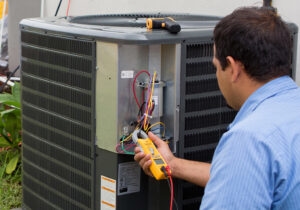Staying cool during sweltering summer months isn’t just about comfort—it’s a necessity. However, statistics show that improper AC installation and maintenance can lead to a decrease in efficiency by 34% (Energy Star). To avoid soaring temperatures and energy bills, here are nine best practices for efficient AC installation and maintenance.
- Right Sizing: Ensure precise AC installation by choosing a unit correctly sized for your space. An oversized or undersized system will reduce efficiency and increase costs.
- Strategic Placement: During AC installation, position the unit away from heat sources and with enough clearance around. This promotes airflow and efficiency.
- Ductwork Inspection: Before AC installation, inspect and seal ductwork. Leaky ducts compromise efficiency, increasing energy consumption by up to 46% (U.S. DOE).
- Proper Insulation: Properly insulate your home to reduce the cooling load. AC installation in a well-insulated space optimizes performance.
- Regular Filter Changes: Post-AC installation, change filters every 30-90 days. Dirty filters cause a 5-10% increase in energy use (EPA).
- Seasonal Tune-ups: Schedule professional maintenance before peak seasons. Regular tune-ups can enhance efficiency by 25% (ASHRAE).
- Thermostat Management: After AC installation, use programmable thermostats. Correct usage can save 10% annually on cooling bills (Energy Star).
- Clean Coils: Maintain cleanliness of AC coils. Dirty coils reduce system efficiency by 30% (ACEEE).
- Upgrade Wisely: Consider energy-efficient models for new AC installation. Look for Energy Star certified units, which can be 10% more efficient (Energy Star).
Remember, AC installation is just the start. Consistent, proactive maintenance is key to long-term savings and comfort. Stay cool, but more importantly, stay smart about your cooling system!

